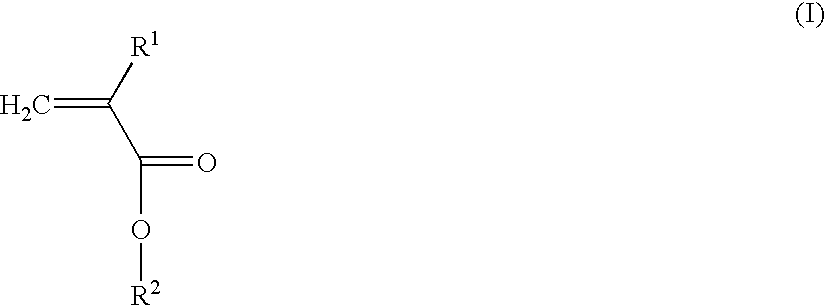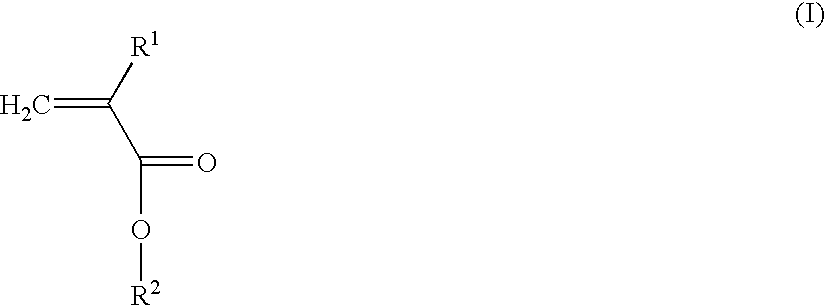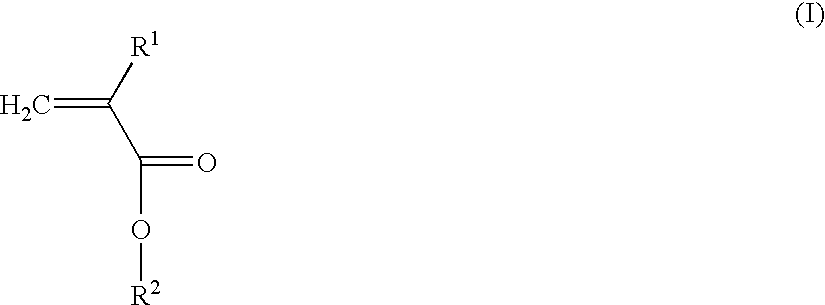Process for crosslinking of ethylene/acrylic ester copolymers
- Summary
- Abstract
- Description
- Claims
- Application Information
AI Technical Summary
Problems solved by technology
Method used
Image
Examples
examples 1-6
Equipment and Materials
[0072] Melt reactions were conducted batchwise in a Brabender Plasticorder.RTM. (C. W. Brabender Instruments, Inc., South Hackensack, N.J., U.S.A.) with a Type 6 Mixer / Measuring Head with roller blades (.about.60 ml cavity). Scale-up runs were also performed in a Brabender Plasticorder.RTM. equipped with a 3-piece Prep Mixer.RTM. and roller blades (.about.350 ml cavity). The typical total charge for the Type 6 was 50 g and for the larger mixer, 250 g. Continuous melt reactions were conducted in a twin-screw extruder described more completely in one of the examples.
example 1
Grafting .omega.-Undecylenyl Alcohol Onto E / 62MA at 200.degree. C.
[0073] To a Type 6 Brabender mixer / measuring head at 200.degree. C. and under nitrogen blanket, with roller blades turning at 75 rpm, were charged 45.0 g of E / 62MA and 5.9 ml c.omega.-undecylenyl alcohol (5.0 g at reported density, calculated mole ratio of ROH / MA=9.1%). After 2 min of mixing, 0.32 ml of 25% (w / w) titanium tetra-n-butoxide in o-dichlorobenzene (catalyst solution) was added gradually by syringe to the clear melt. Following catalyst addition, the Brabender torque rose gradually from 110 to 260 m-g. The mixer blades were stopped, the head disassembled, and the product discharged 13 min after beginning the catalyst addition. Part of the product (10.0 g) was dissolved in 50 ml of CH.sub.2Cl.sub.2, the solution precipitated in 250 ml of methanol in a blender. The precipitated solid was rinsed three times with 100-ml portions of methanol, each time kneaded in the presence of the liquid to improve extraction o...
example 2
Grafting .omega.-Undecylenyl Alcohol Onto E / 62MA at 230.degree. C.
[0074] The procedure of Example 1 was repeated except that the Brabender was heated to 230.degree. C. Following catalyst addition, the Brabender torque rose rapidly from 50 to 330 m-g and then leveled off at 280 m-g. The average fraction of MA replaced by .omega.-undecylenyl alcohol was 6.3 (2-A), 5.8 (2-B), and 5.7% (2-C).
PUM
| Property | Measurement | Unit |
|---|---|---|
| Percent by mass | aaaaa | aaaaa |
| Temperature | aaaaa | aaaaa |
| Temperature | aaaaa | aaaaa |
Abstract
Description
Claims
Application Information
 Login to View More
Login to View More - R&D Engineer
- R&D Manager
- IP Professional
- Industry Leading Data Capabilities
- Powerful AI technology
- Patent DNA Extraction
Browse by: Latest US Patents, China's latest patents, Technical Efficacy Thesaurus, Application Domain, Technology Topic, Popular Technical Reports.
© 2024 PatSnap. All rights reserved.Legal|Privacy policy|Modern Slavery Act Transparency Statement|Sitemap|About US| Contact US: help@patsnap.com










